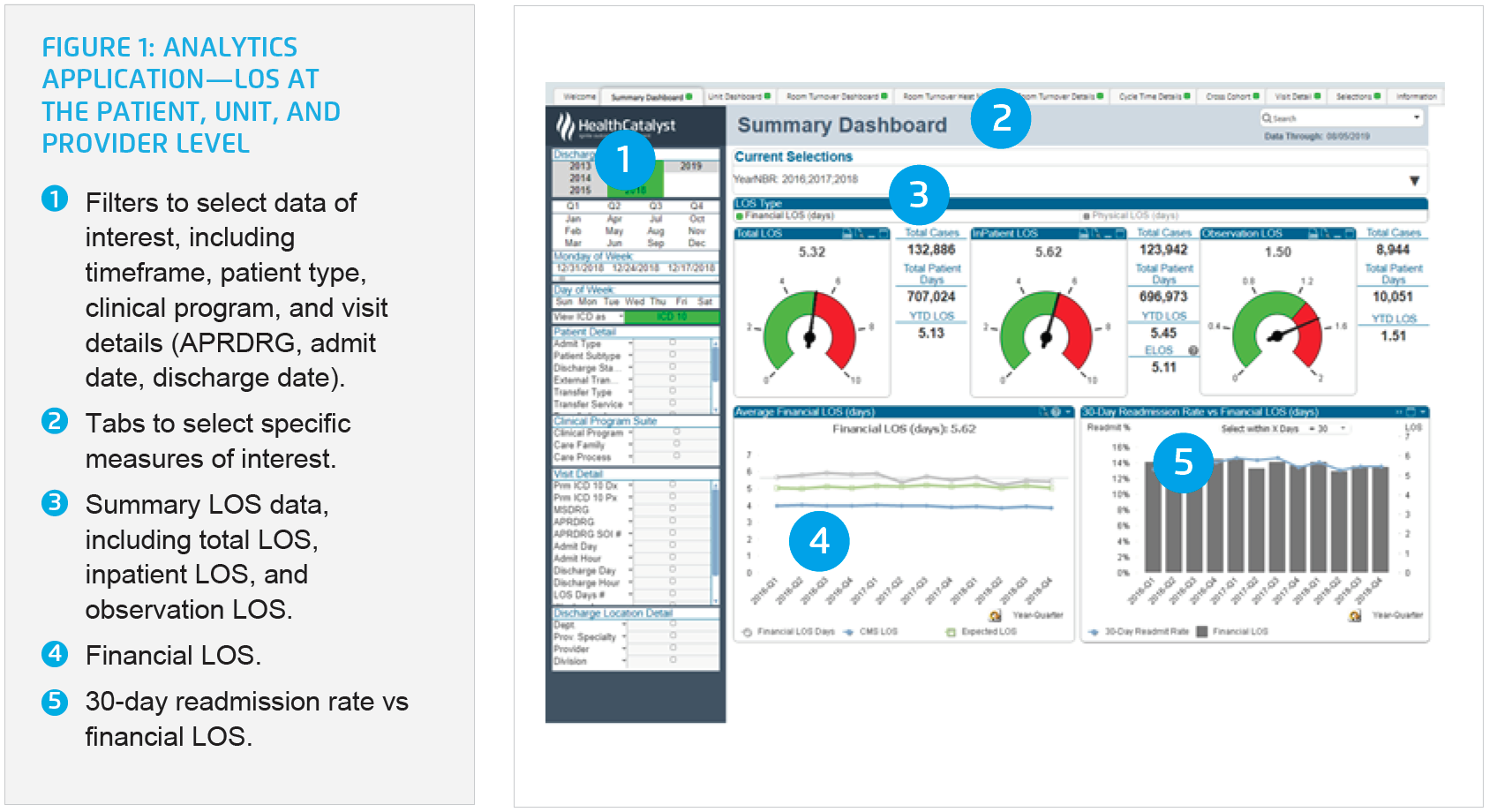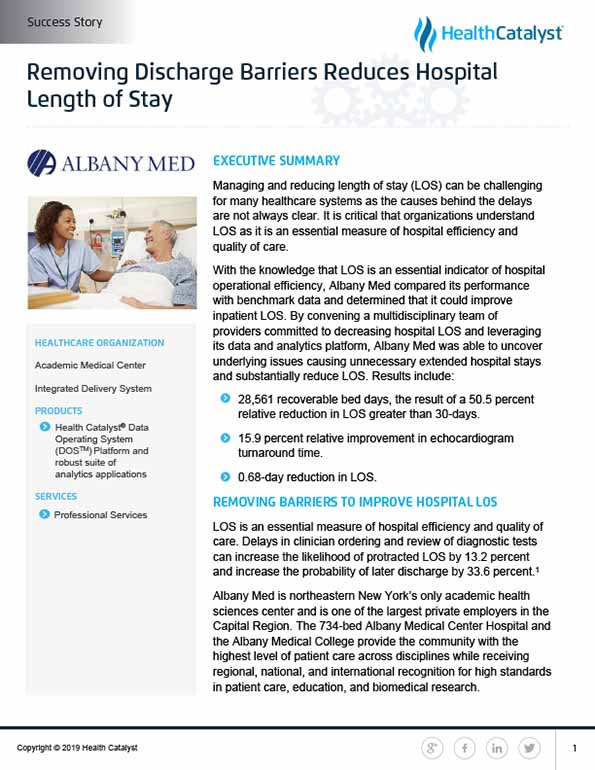Managing and reducing length of stay (LOS) is vital for hospital efficiency and care quality. Albany Med compared its performance with benchmark data and determined it could improve inpatient LOS. It formed a multidisciplinary team and leveraged its data and analytics platform to identify issues causing extended stays, leading to significant improvements in inpatient LOS.
Managing and reducing length of stay (LOS) can be challenging for many healthcare systems as the causes behind the delays are not always clear. It is critical that organizations understand LOS as it is an essential measure of hospital efficiency and quality of care.
With the knowledge that LOS is an essential indicator of hospital operational efficiency, Albany Med compared its performance with benchmark data and determined that it could improve inpatient LOS. By convening a multidisciplinary team of providers committed to decreasing hospital LOS and leveraging its data and analytics platform, Albany Med was able to uncover underlying issues causing unnecessary extended hospital stays and substantially reduce LOS.
LOS is an essential measure of hospital efficiency and quality of care. Delays in clinician ordering and review of diagnostic tests can increase the likelihood of protracted LOS by 13.2 percent and increase the probability of later discharge by 33.6 percent.1
Albany Med is northeastern New York’s only academic health sciences center and is one of the largest private employers in the Capital Region. The 734-bed Albany Medical Center Hospital and the Albany Medical College provide the community with the highest level of patient care across disciplines while receiving regional, national, and international recognition for high standards in patient care, education, and biomedical research.
With the knowledge that LOS is an essential indicator of hospital operational efficiency, Albany Med compared its performance with benchmark data and determined that it could improve its inpatient LOS.
Albany Med leverages lean methodology as its performance improvement framework. However, it lacked access to the timely, actionable data it needed to identify important drivers impacting LOS, such as wait times for tests or services.
The health system sought a data-driven solution to support LOS improvement efforts. This required the analysis of large volumes of operational data, which delayed the implementation and evaluation of improvement efforts.
Albany Med created an interdisciplinary guidance committee, led by the Office of Medical Affairs, along with increased accountability for team members in prioritizing and coordinating hospital-wide initiatives to reduce hospital LOS.
To gain needed insight to drive improvement efforts, Albany Med leveraged the Health Catalyst® Data Operating System (DOS™) and a robust suite of analytics applications. The data and analytics platform extracts data from multiple source systems and aggregates the data into an easy-to-consume visualization dashboard, enabling the improvement team to see the factors contributing to extended LOS, including wait times or delays in services on an individual patient, unit, and provider level (see Figure 1).

Upon analysis of the data, Albany Med identified two significant contributors that were negatively impacting LOS outcomes: extended LOS (defined as greater than 30 days) and delays in patients receiving echocardiograms.
Albany Med used its standard improvement methodology to design and implement several changes to address barriers for patients with extended stays and to improve the turnaround time for echocardiograms.
With access to up-to-date data through the data and analytics platform, Albany Med can rapidly identify patients with stays in the hospital for a non-clinical reason beyond 10, 15, and 30 days who could benefit from case management.
The interdisciplinary workgroup, consisting of a clinician, caseworker, attorney, financial expert, an ethicist, and others, reviewed the list on a weekly basis to discuss patient needs and then planned case management activities to proactively address discharge barriers.
For long-stay patients, the committee begins working on the case as early as barriers to discharge are discovered and meets three times a week to ensure clear communication and care coordination. Case managers are careful to involve the patient, healthcare providers, and other agencies in the process of targeting the patient’s specific areas of concern.
Case managers meet with patients to assess their psychosocial and medical care coordination needs. Based on this assessment, case managers collaborate with patients to develop a service plan that addresses the needs of the patient and the family. As the patient’s needs change, case managers provide continued support, education, and advocacy. Staff are also available to assist with an array of needs, including:
Information from the data and analytics platform demonstrated that 18 percent of patients who had an echocardiogram during the hospital stay had an estimated one-day increase in their LOS.
Drawing on this information, the workgroup analyzed the workflow and identified pain points that negatively impacted the timeliness of patients receiving an echocardiogram, focusing their performance improvement efforts on flexible hours of service, technology improvements, and workforce optimization, all resulting in a material reduction in results turnaround time.
Using this comprehensive data-driven approach, Albany Med has substantially reduced LOS, exceeding benchmark targets, including:
“The successful outcomes achieved in collaboration with these multidisciplinary performance improvement teams under the guidance of our physician champions have positioned our analytics platform as a source of trust and increased systemwide adoption.”
– Michael Hamilton, Vice President Analytics, Albany Med
Albany Med intends to further expand the use of its data and analytics platform to look for opportunities to reduce costs while providing excellent care quality and patient outcomes.


